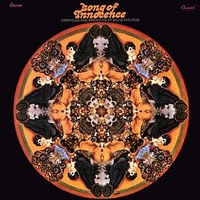 Trying to put a tag on the music of legendary producer David Axelrod is almost impossible as his music, especially [when] early offerings such as this, straddles so many genres. You get funk, jazz, classical and rock all thrown into the melting pot to create a rather unique sound that has had a large influence on many people. Nowhere has this been more apparent than in hip hop and trip hop where this LP has been heavily sampled. If you are a fan of those two genres prepare to hear a lot of familiar breaks when you hear this record for the first time. The LP itself was heavily influenced by the poetry of William Blake hence there is a dark brooding feel throughout and Axelrod uses layers of strings playing minor keys to obtain this mood. The drums and percussion drive the music on and there are some fantastic guitar breaks. –Jon
Trying to put a tag on the music of legendary producer David Axelrod is almost impossible as his music, especially [when] early offerings such as this, straddles so many genres. You get funk, jazz, classical and rock all thrown into the melting pot to create a rather unique sound that has had a large influence on many people. Nowhere has this been more apparent than in hip hop and trip hop where this LP has been heavily sampled. If you are a fan of those two genres prepare to hear a lot of familiar breaks when you hear this record for the first time. The LP itself was heavily influenced by the poetry of William Blake hence there is a dark brooding feel throughout and Axelrod uses layers of strings playing minor keys to obtain this mood. The drums and percussion drive the music on and there are some fantastic guitar breaks. –Jon
Rock
The Beatles “Magical Mystery Tour” (1967)
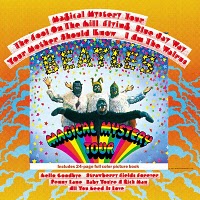 Released only a few months after Sgt. Pepper’s, Magical Mystery Tour had mighty big shoes to fill. Despite its expected chartbuster sales figures, many felt let down by what seemed a musical afterthought. Being guilty by association with the only truly lame Beatles film, sporting an unbecomingly goofy cover, and appearing to be yet another Capitol Records “hatchet job” release, it seemed doomed to a lifetime of disrespect from the start. But over time this lovable underdog has solidified itself both as a fine collection of songs and an essential document of a band just moments away from the most dramatic artistic shift of its career. MMT represents the triumphant last hurrah of the “Psychedelic Beatles”. While the iconic “I am the Walrus” is certainly its most famous example, Harrison’s lost-in-the-fog dirge, “Blue Jay Way”, delivers its most profoundly surreal moment. In fact, it’s the seldom-heard-elsewhere obscurities that propel MMT to greatness: “Your Mother Should Know”, a nugget of Macca’s sterling pop songcraft; the dreamy “Flying”, the only instrumental to ever make it on to a proper Beatles LP; and “Baby You’re a Rich Man”, their catchiest-ever non-hit. Sure, there are the hits too, but these somehow coexist with their less radio-saturated counterparts. While “Penny Lane” and “Strawberry Fields Forever” were released as a double A-side almost a year before, their absence here would be unthinkable. And “All You Need is Love”, originally recorded for an unrelated global telecast, ends up providing one of the greatest album closers in history. UK fans remain critical, perhaps justifiably; they got a much shorter EP version. But years later, when reconnoitering the British albums for release on CD, Apple decided that this superior version of MMT would join the ranks of the Beatles’ “Core Catalog” thus conceding that –- just this once -– Capitol got it right. – Richard
Released only a few months after Sgt. Pepper’s, Magical Mystery Tour had mighty big shoes to fill. Despite its expected chartbuster sales figures, many felt let down by what seemed a musical afterthought. Being guilty by association with the only truly lame Beatles film, sporting an unbecomingly goofy cover, and appearing to be yet another Capitol Records “hatchet job” release, it seemed doomed to a lifetime of disrespect from the start. But over time this lovable underdog has solidified itself both as a fine collection of songs and an essential document of a band just moments away from the most dramatic artistic shift of its career. MMT represents the triumphant last hurrah of the “Psychedelic Beatles”. While the iconic “I am the Walrus” is certainly its most famous example, Harrison’s lost-in-the-fog dirge, “Blue Jay Way”, delivers its most profoundly surreal moment. In fact, it’s the seldom-heard-elsewhere obscurities that propel MMT to greatness: “Your Mother Should Know”, a nugget of Macca’s sterling pop songcraft; the dreamy “Flying”, the only instrumental to ever make it on to a proper Beatles LP; and “Baby You’re a Rich Man”, their catchiest-ever non-hit. Sure, there are the hits too, but these somehow coexist with their less radio-saturated counterparts. While “Penny Lane” and “Strawberry Fields Forever” were released as a double A-side almost a year before, their absence here would be unthinkable. And “All You Need is Love”, originally recorded for an unrelated global telecast, ends up providing one of the greatest album closers in history. UK fans remain critical, perhaps justifiably; they got a much shorter EP version. But years later, when reconnoitering the British albums for release on CD, Apple decided that this superior version of MMT would join the ranks of the Beatles’ “Core Catalog” thus conceding that –- just this once -– Capitol got it right. – Richard
The Rolling Stones “Sticky Fingers” (1971)
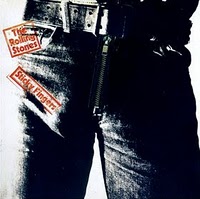 The Stones in peak form, having with this album reached the point where everything always seems just on the verge of falling apart (listen to that lazy backbeat on “Sway,” easily one of their greatest songs; the chorus of “Can’t You Hear Me Knocking,” with its vocal declamation/piano vamping/guitar sliding just off-kilter enough to be note-perfect). One of the few rock albums to utilize horns and strings with proper contextuality (only to be outdone with their next release…): rather than filling in space or adding some “mood” or “colour,” these additions flesh out the emotional range of the songs themselves (as does the Santana-lite jam at the end of “CYHMK’ing”, with its suspenseful repetition and restraint). Despite being nearly killed by FM radio, “Brown Sugar” remains a perfect opener, with that fantastic electric/acoustic guitar interplay and the castanets, which burst in through the saloon doors and swagger on up to the bar, but only hint at the brash, swaggering shitkicking that the listener gets from this album. “Moonlight Mile” is a perfect closer, sleepy, resigned, yet ecstatic. The sleaze factor also helps (packaging and all), what with the sex and drugs and generally foggy malaise over the whole thing, letting the highs really rise in contrast. They couldn’t consciously make an album this good – it ain’t about consciousness, it’s about guitar, bass, and drums. –Will
The Stones in peak form, having with this album reached the point where everything always seems just on the verge of falling apart (listen to that lazy backbeat on “Sway,” easily one of their greatest songs; the chorus of “Can’t You Hear Me Knocking,” with its vocal declamation/piano vamping/guitar sliding just off-kilter enough to be note-perfect). One of the few rock albums to utilize horns and strings with proper contextuality (only to be outdone with their next release…): rather than filling in space or adding some “mood” or “colour,” these additions flesh out the emotional range of the songs themselves (as does the Santana-lite jam at the end of “CYHMK’ing”, with its suspenseful repetition and restraint). Despite being nearly killed by FM radio, “Brown Sugar” remains a perfect opener, with that fantastic electric/acoustic guitar interplay and the castanets, which burst in through the saloon doors and swagger on up to the bar, but only hint at the brash, swaggering shitkicking that the listener gets from this album. “Moonlight Mile” is a perfect closer, sleepy, resigned, yet ecstatic. The sleaze factor also helps (packaging and all), what with the sex and drugs and generally foggy malaise over the whole thing, letting the highs really rise in contrast. They couldn’t consciously make an album this good – it ain’t about consciousness, it’s about guitar, bass, and drums. –Will
The Allman Brothers Band “At Fillmore East” (1971)
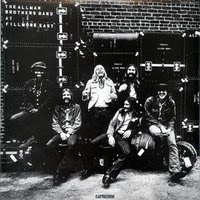 If I was pressed to name the most talented rock band, in terms of pure ability to play their instruments, I would choose the Allman Brothers. The first three tracks, standard blues fair, won’t win any converts. They are played very well, of course, but they’re just the appetizer for the main course. The 20-minute “You Don’t Love Me” kicks off the awe-inspiring portion of the album, show-casing the band’s brilliant interplay and individual contributions. Then, amazingly, “Hot ‘Lanta” does the same thing, even better, in just over five minutes. Finally, “In Memory of Elizabeth Reed” and “Whipping Post” deliver 30-plus minutes of the greatest live rock performance I’ve ever heard. The communication between the entire band verges on telepathic, but you’d have to come up with a new super-power to describe the connection between Dickie and Duane. With most live recordings, I get bored by the time a song hits the six-minute mark. Here, even the ample running time seems cruelly short. –Lucas
If I was pressed to name the most talented rock band, in terms of pure ability to play their instruments, I would choose the Allman Brothers. The first three tracks, standard blues fair, won’t win any converts. They are played very well, of course, but they’re just the appetizer for the main course. The 20-minute “You Don’t Love Me” kicks off the awe-inspiring portion of the album, show-casing the band’s brilliant interplay and individual contributions. Then, amazingly, “Hot ‘Lanta” does the same thing, even better, in just over five minutes. Finally, “In Memory of Elizabeth Reed” and “Whipping Post” deliver 30-plus minutes of the greatest live rock performance I’ve ever heard. The communication between the entire band verges on telepathic, but you’d have to come up with a new super-power to describe the connection between Dickie and Duane. With most live recordings, I get bored by the time a song hits the six-minute mark. Here, even the ample running time seems cruelly short. –Lucas
Starcastle “Starcastle” (1976)
 Imagine a group of children raised in total isolation, their only stimulus coming from daily spinnings of Fragile and Close to the Edge. If they were to grow up and make an album of their own, it would be Starcastle. Long-winded compositions full of buzzing Rickenbacker bass, precision drumming and hot shot guitars, a Wakeman-esque pallet of synth tones, and high-pitched vocals delivering nonsensical lyrics of elemental wonder, it’s all here. If there’s anything to separate Starcastle from Yes, it’s that the ‘castle seem to be even more uncompromising in their devotion to the most progressive elements of the sound, generally eschewing the sense of pop smarts that handed Yes a few hits and radio favorites along the way, in favor of a rabid working of the ornate and extravagant end of the spectrum. Yeah, it’s derivativeness is obvious, but it doesn’t change the fact that Starcastle still plays like a wet dream for acne-scarred starship troopers. –Ben
Imagine a group of children raised in total isolation, their only stimulus coming from daily spinnings of Fragile and Close to the Edge. If they were to grow up and make an album of their own, it would be Starcastle. Long-winded compositions full of buzzing Rickenbacker bass, precision drumming and hot shot guitars, a Wakeman-esque pallet of synth tones, and high-pitched vocals delivering nonsensical lyrics of elemental wonder, it’s all here. If there’s anything to separate Starcastle from Yes, it’s that the ‘castle seem to be even more uncompromising in their devotion to the most progressive elements of the sound, generally eschewing the sense of pop smarts that handed Yes a few hits and radio favorites along the way, in favor of a rabid working of the ornate and extravagant end of the spectrum. Yeah, it’s derivativeness is obvious, but it doesn’t change the fact that Starcastle still plays like a wet dream for acne-scarred starship troopers. –Ben
Grateful Dead “Grateful Dead” (1967)
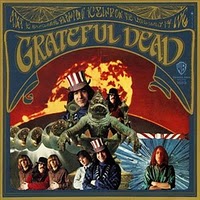 The Dead were never a studio band, and their first record is even overlooked by the most ardent Deadheads. It’s easy to see why; here they sound more like a garage band: raw, loud, way fast, and with only one drummer! Recorded in LA, it’s rumored that the band cut these tracks in just a few hours while hopped up on Ritalin (an irony considering the superhuman attention span required for the long-winded jams of their later years). The opener, “The Golden Road…” sets the momentum for a series of short, bluesy, breakneck tempo numbers that don’t slow down until the beginning of Side Two: a cover of Bonnie Dobson’s post-apocalyptic “Where is everybody?” ballad, “Morning Dew”. But even here there’s a sense of visceral urgency that the band seldom recaptured on stage or off. The closing prison song cover, “Viola Lee Blues”, more closely resembles the exploratory and improvisational sound that would soon become their stock in trade, but with just enough sloppiness and dissonance to keep things interesting. From here, the Dead would inarguably record and perform some more great music while vocalist/organist Pigpen still had his liver, but never again with such reckless abandon. –Richard P
The Dead were never a studio band, and their first record is even overlooked by the most ardent Deadheads. It’s easy to see why; here they sound more like a garage band: raw, loud, way fast, and with only one drummer! Recorded in LA, it’s rumored that the band cut these tracks in just a few hours while hopped up on Ritalin (an irony considering the superhuman attention span required for the long-winded jams of their later years). The opener, “The Golden Road…” sets the momentum for a series of short, bluesy, breakneck tempo numbers that don’t slow down until the beginning of Side Two: a cover of Bonnie Dobson’s post-apocalyptic “Where is everybody?” ballad, “Morning Dew”. But even here there’s a sense of visceral urgency that the band seldom recaptured on stage or off. The closing prison song cover, “Viola Lee Blues”, more closely resembles the exploratory and improvisational sound that would soon become their stock in trade, but with just enough sloppiness and dissonance to keep things interesting. From here, the Dead would inarguably record and perform some more great music while vocalist/organist Pigpen still had his liver, but never again with such reckless abandon. –Richard P
The Replacements “Tim” (1985)
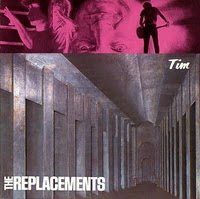 After the skillful Let It Be, Paul Westerberg and the boys decided to make another essential classic rock album, only this time they got even better. Tim is loaded up with first-rate tunes such as the lasting “Bastards of Young” accompanied with the sweet “Kiss Me on the Bus.” Let’s not forget the sacred “Left of the Dial” and the touching “Here Comes a Regular.” One of my personal favorites is “Swingin’ Party,” it’s so catchy and complete with solitude that it’s one of the very few songs I never get tired of. “Hold My Life” is terrific and “Little Mascara” is compelling at times. Every last song on this disc is superlative rock ‘n’ roll. If I was pressed to make a pick for the must hear Replacements album, it just might have to go to Tim. How this wasn’t one of the best selling albums of the 80’s is beyond me. –Jason
After the skillful Let It Be, Paul Westerberg and the boys decided to make another essential classic rock album, only this time they got even better. Tim is loaded up with first-rate tunes such as the lasting “Bastards of Young” accompanied with the sweet “Kiss Me on the Bus.” Let’s not forget the sacred “Left of the Dial” and the touching “Here Comes a Regular.” One of my personal favorites is “Swingin’ Party,” it’s so catchy and complete with solitude that it’s one of the very few songs I never get tired of. “Hold My Life” is terrific and “Little Mascara” is compelling at times. Every last song on this disc is superlative rock ‘n’ roll. If I was pressed to make a pick for the must hear Replacements album, it just might have to go to Tim. How this wasn’t one of the best selling albums of the 80’s is beyond me. –Jason
Brian Eno “Another Green World” (1975)
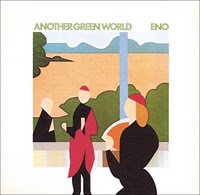 Another Green World is a mix between the instrumental ambient music Eno was making at the time, and the relatively more structured pop/rock songs he had released on albums like Here Come the Warm Jets. Somehow, the combination works even better than either of individual elements does on their own, as this is his best album. More than anything, Another Green World is about atmosphere. In that regard, it’s dreamy soundscapes remind me of Miles’ In a Silent Way. –Lucas
Another Green World is a mix between the instrumental ambient music Eno was making at the time, and the relatively more structured pop/rock songs he had released on albums like Here Come the Warm Jets. Somehow, the combination works even better than either of individual elements does on their own, as this is his best album. More than anything, Another Green World is about atmosphere. In that regard, it’s dreamy soundscapes remind me of Miles’ In a Silent Way. –Lucas
Cheap Trick “At Budokan” (1979)
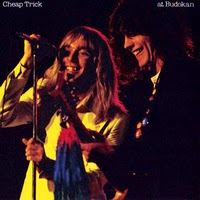 At Budokan brought Cheap Trick to the masses with a vibrant live set that captured the band in front of an adoring Japanese audience. Entirely overlooked on the original, the band’s debut is represented by “ELO Kiddies” and “Speak Now or Forever Hold Your Peace,” while essential In Color Tricksters “Downed” and “Southern Girls” are cranked to arena-rockin’ levels in the same way the live “I Want You to Want Me” blew the lid off the studio version to achieve hit status. Elsewhere, “Auf Wiedersehen” and “High Roller” are featured from Heaven Tonight, as is the slow burning non-LP ballad “Can’t Hold On.” While the original At Budokan is a potent single album’s worth of smoldering melodic rock fire, 1998’s expanded “At Budokan: The Complete Concert” proves you can’t get too much of a good thing. –Ben
At Budokan brought Cheap Trick to the masses with a vibrant live set that captured the band in front of an adoring Japanese audience. Entirely overlooked on the original, the band’s debut is represented by “ELO Kiddies” and “Speak Now or Forever Hold Your Peace,” while essential In Color Tricksters “Downed” and “Southern Girls” are cranked to arena-rockin’ levels in the same way the live “I Want You to Want Me” blew the lid off the studio version to achieve hit status. Elsewhere, “Auf Wiedersehen” and “High Roller” are featured from Heaven Tonight, as is the slow burning non-LP ballad “Can’t Hold On.” While the original At Budokan is a potent single album’s worth of smoldering melodic rock fire, 1998’s expanded “At Budokan: The Complete Concert” proves you can’t get too much of a good thing. –Ben
Gene Clark “Gene Clark With The Gosdin Brothers” (1967)
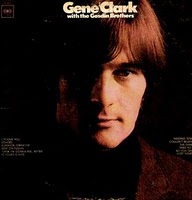 After leaving the Byrds, Clark should’ve been a huge success. But in a way I’m selfishly glad that he remains one of the best kept secrets in popular music, widely influential but entirely under the radar of popular recognition. While his Dylanesque White Light and his coked-out baroque country masterpiece, No Other, are generally the ones most often mentioned, this one, which to all intents and purposes is his solo debut (the Gosdin brothers playing an integral role but having little to do with the album’s composition), is a record of tremendous scope for its modest length, with flashes of country, bluegrass, baroque pop, psychedelia—and more than an occasional nod to the spare melodicism of Rubber Soul. It’s the kind of record only a singer and songwriter as talented as Clark could pull off without coming off as pretentious or boring or unfocused. This album is none of those things. It frequently beats the Byrds at their own game, so fans of that group’s ilk should get this posthaste. But I’d recommend this to anyone with an interest in the best stuff from the mid 60s. –Will
After leaving the Byrds, Clark should’ve been a huge success. But in a way I’m selfishly glad that he remains one of the best kept secrets in popular music, widely influential but entirely under the radar of popular recognition. While his Dylanesque White Light and his coked-out baroque country masterpiece, No Other, are generally the ones most often mentioned, this one, which to all intents and purposes is his solo debut (the Gosdin brothers playing an integral role but having little to do with the album’s composition), is a record of tremendous scope for its modest length, with flashes of country, bluegrass, baroque pop, psychedelia—and more than an occasional nod to the spare melodicism of Rubber Soul. It’s the kind of record only a singer and songwriter as talented as Clark could pull off without coming off as pretentious or boring or unfocused. This album is none of those things. It frequently beats the Byrds at their own game, so fans of that group’s ilk should get this posthaste. But I’d recommend this to anyone with an interest in the best stuff from the mid 60s. –Will
Rush “Hemispheres” (1978)
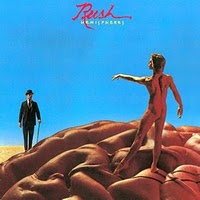 Hemispheres is the culmination of all that Rush had been striving for since Neil Peart ascended to the drum stool back on Fly By Night. The side-long title track is a winding conceptual piece that one-ups 2112 in it’s uniformity and metaphorical marriage of paperback fantasy with egghead philosophy. A continuation of A Farewell To Kings’ “Cygnus X-1” (on tour Rush would play both pieces together, forming one 30-minute monstrosity), “Hemispheres” tells a convoluted tale of the “battle of heart and mind” that dabbles in Greek mythology and Nietzsche-inspired psychology, set to an ever-unfolding barrage of head-spinning riffs. But it’s side two of Hemispheres that ensures it’s classic status, with the brief, but hard-hitting and lyrically direct “Circumstances,” ably leading things off. “The Trees,” an almost Brothers Grimm styled allegorical tale of the pitfalls of collectivism, quickly became a Rush standard, as did the multi-part instrumental “La Villa Strangiato.” Subtitled with a wink, “An Exercise in Self-Indulgence,” the showcase is a tour-de-force of prog-rock muscle that probably inspired half of the kids who heard it to hone their musical chops, while the other half headed straight for the record store’s newly-added punk bin. But in it’s own way, Hemispheres is as uncompromising a statement as any, and with it Rush carved a permanent niche as leaders of their own pencil-necked revolution. –Ben
Hemispheres is the culmination of all that Rush had been striving for since Neil Peart ascended to the drum stool back on Fly By Night. The side-long title track is a winding conceptual piece that one-ups 2112 in it’s uniformity and metaphorical marriage of paperback fantasy with egghead philosophy. A continuation of A Farewell To Kings’ “Cygnus X-1” (on tour Rush would play both pieces together, forming one 30-minute monstrosity), “Hemispheres” tells a convoluted tale of the “battle of heart and mind” that dabbles in Greek mythology and Nietzsche-inspired psychology, set to an ever-unfolding barrage of head-spinning riffs. But it’s side two of Hemispheres that ensures it’s classic status, with the brief, but hard-hitting and lyrically direct “Circumstances,” ably leading things off. “The Trees,” an almost Brothers Grimm styled allegorical tale of the pitfalls of collectivism, quickly became a Rush standard, as did the multi-part instrumental “La Villa Strangiato.” Subtitled with a wink, “An Exercise in Self-Indulgence,” the showcase is a tour-de-force of prog-rock muscle that probably inspired half of the kids who heard it to hone their musical chops, while the other half headed straight for the record store’s newly-added punk bin. But in it’s own way, Hemispheres is as uncompromising a statement as any, and with it Rush carved a permanent niche as leaders of their own pencil-necked revolution. –Ben
T. Rex “Zinc Alloy and the Hidden Riders of Tomorrow” (1974)
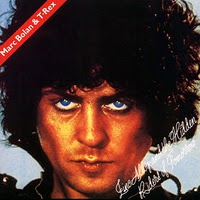 Conventional wisdom holds that Marc Bolan & T. Rex started to sink with Zinc Alloy and the Hidden Riders of Tomorrow (or was it Tanx?) into his bloated period of mid-seventies mediocrity, but as a Bolan apologist I still hold it in high regard. Certainly, Zinc Alloy is the strangest release yet from the glitter-rock fairy, an often uncomfortable and chaotic collection that radiates a nasty, coke-fueled jitter. Bolan’s idea of the new T-Rex sound was some sort of bubblegum-soul hybrid, and to that end he introduced future Mrs. Bolan, Gloria Jones, to the T-Rex fold, whose blood-curdling wail ironically possessed about as much soul as a set of fingernails being drawn across a chalkboard. Her voice, plus heavy doses of Bolan’s spazzy fuzz guitar, and strings and synthesizers, are some of the odd limbs comprising this stumbling, glam-funk Frankenstein. But Bolan could pull killer hooks out of his wizard’s hat no matter how deluded his vision had become in his quest to break the American market, witness the jumpy “Venus Loon,” jubilant “Interstellar Soul” and “Nameless Wilderness” or glam grind of “Liquid Gang.” Elsewhere, song fragments like “Galaxy” and “Spanish Midnight” house equally effective melodies, while the sweaty “Explosive Mouth” and grand “Carlisle Smith & the Old One” are other lost gems from this release. The relatively tame “Teenage Dream,” with it’s retro-50’s lean, would make for an odd single flop from the album. –Ben
Conventional wisdom holds that Marc Bolan & T. Rex started to sink with Zinc Alloy and the Hidden Riders of Tomorrow (or was it Tanx?) into his bloated period of mid-seventies mediocrity, but as a Bolan apologist I still hold it in high regard. Certainly, Zinc Alloy is the strangest release yet from the glitter-rock fairy, an often uncomfortable and chaotic collection that radiates a nasty, coke-fueled jitter. Bolan’s idea of the new T-Rex sound was some sort of bubblegum-soul hybrid, and to that end he introduced future Mrs. Bolan, Gloria Jones, to the T-Rex fold, whose blood-curdling wail ironically possessed about as much soul as a set of fingernails being drawn across a chalkboard. Her voice, plus heavy doses of Bolan’s spazzy fuzz guitar, and strings and synthesizers, are some of the odd limbs comprising this stumbling, glam-funk Frankenstein. But Bolan could pull killer hooks out of his wizard’s hat no matter how deluded his vision had become in his quest to break the American market, witness the jumpy “Venus Loon,” jubilant “Interstellar Soul” and “Nameless Wilderness” or glam grind of “Liquid Gang.” Elsewhere, song fragments like “Galaxy” and “Spanish Midnight” house equally effective melodies, while the sweaty “Explosive Mouth” and grand “Carlisle Smith & the Old One” are other lost gems from this release. The relatively tame “Teenage Dream,” with it’s retro-50’s lean, would make for an odd single flop from the album. –Ben


